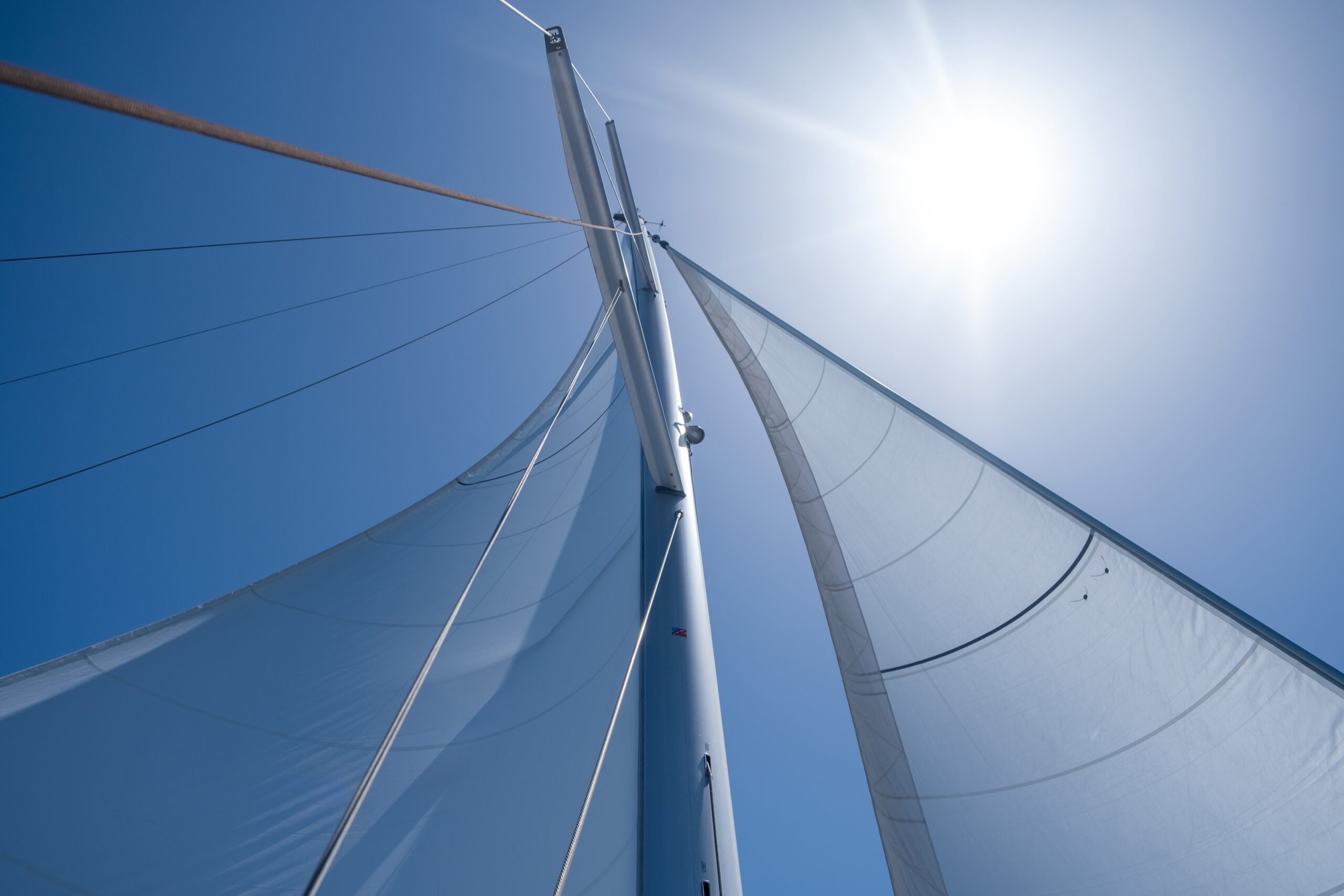July 17, 2024
Turning the wind around – how to unleash your ship’s “speed reserve” with voyage optimization

The shipping industry is changing, and there are not many constants other than that cargo needs to move and emissions need to be reduced. Wind propulsion can help shipowners fulfill both – but not without help from voyage optimization systems. It has the potential to transform the industry, however, as with most new technology, it requires diligent thought and an adapted way of working.
NAPA Voyage Optimization is a system for finding optimal voyages from point A to B depending on the weather conditions and a myriad of other constraints. As such, it can also be used as a simulation tool, providing deep insights into the optimization of voyages and fleets that utilize wind propulsion. It simulates the sea and the ship with the sail in a way that can provide more clarity on the utility of the sails on given routes.
Simply put, voyage optimization is integral to reap the full benefit of the sail investment.
What to do when the sails do not deliver?
In some cases, the utility of the rotor sail is questionable, so let’s run some simulations on how sails perform in difficult scenarios. The easiest example of this is constant headwinds. Let us run a few simulations between Sri Lanka and Bangladesh on an imaginary 230-meter-long oil tanker with (and without) three approximately 30-meter-high rotor sails. With NAPA Voyage Optimization, we can model a voyage between the two ports with a vessel speed of 12.4 knots. If we run this voyage with a ship model that has the sails and with one that does not, we will find that it is actually not very beneficial to have those energy-saving devices onboard.
Simulated consumption without sails is 118.7 tons of fuel, whereas the model with sails consumes 3.5% more. Wind propulsion is able to generate thrust at various angles, but is unable to during headwinds or near-headwinds. In those scenarios, the sail actually increases ships total resistance.

Let us optimize the route to the best of our ability and see if that improves the efficiency of the sails. The only constant being the arrival time.

We find that in this weather, the sail still does not bring fuel-saving benefits. It is still cheaper to operate the vessel without the sail – although it’s important to note that voyage optimization brings fuel savings in both cases compared to the non-optimized routes.
Is there anything we can do?
So, this is the bullet we must bite, right? Weather the storm and wait for the bull market? Since the sail is not useful, can we save fuel in another way? What if we reduce the speed of the ship by 2 knots?

When we do that, something interesting happens. With NAPA Voyage Optimization, we can bring the consumption of the vessel equipped with sails lower than that of the one without the wind propulsion system. This can happen if we allow the ship to deviate from the shortest route.
With the optimal route for the sail, the speed range is larger – between 8.2 and 12.3 knots compared to 8.3 and 11.1 knots respectively. In addition, the optimal routes are different, with the wind-assisted vessel sailing more towards the west.
With the sail, the effect of the weather is more pronounced. One could hypothesize, with credibility, that the potential by which one can go and catch favorable winds (or avoid unfavorable ones) is the key here. Slow steaming unlocks this potential, because it allows the vessel to vary the route and the speed profile. We call this the speed reserve of the ship – its ability to be flexible with its speed and course to catch good weather and escape the bad.
What if we reverse the scenario?
Just to be sure that the simulations genuinely took place in adverse weather – let’s flip the chart, i.e. change the direction of sailing. Can we still see the utility of the wind propulsion system – without any routing or speed reduction? We should, because we are going in the other direction.

What is found is that in this specific case, the sole existence of the sails boosts the performance by 4%. One could simulate what the savings would be if voyage optimization was applied in the previous manner. Not to mention that through slow steaming, we allow the vessel to have a large speed reserve and thus are able to make larger deviations to the route to take full advantage of the sails.
Final verdict: flexibility in speed and course deviations are a must to maximize wind propulsion potential
These simulations prove that wind propulsion can bring unexpected benefits. When ships have sails, they become more sensitive to weather. Thus, the ability to be more flexible in speed and course deviations increases the value delivered by wind propulsion systems. Utilized in the right way – coupled with voyage optimization – simulations show that a vessel can avoid costly strong headwinds, and how significant emission and cost savings can be made.
